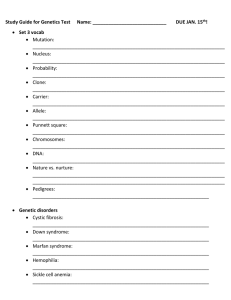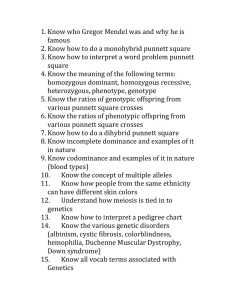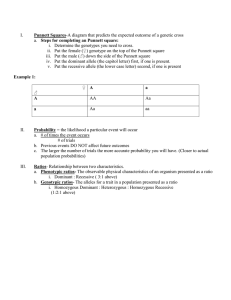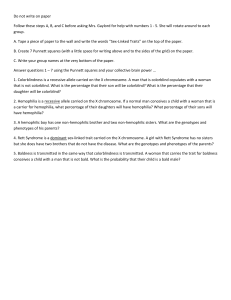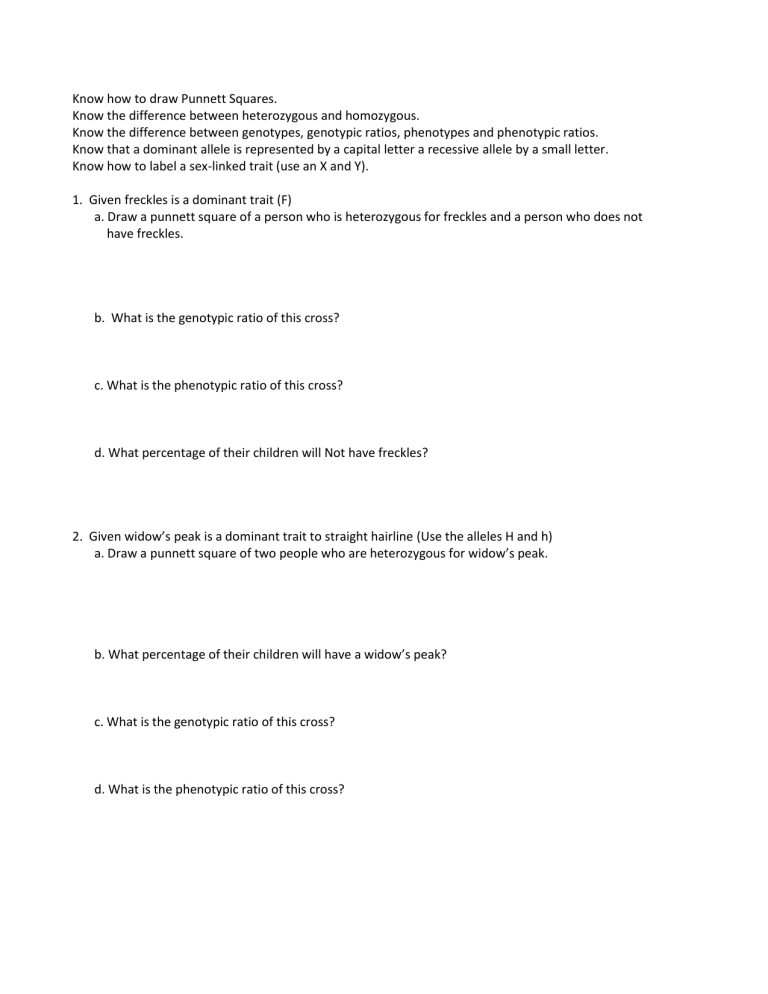
Know how to draw Punnett Squares.
Know the difference between heterozygous and homozygous.
Know the difference between genotypes, genotypic ratios, phenotypes and phenotypic ratios.
Know that a dominant allele is represented by a capital letter a recessive allele by a small letter.
Know how to label a sex-linked trait (use an X and Y).
1. Given freckles is a dominant trait (F)
a. Draw a punnett square of a person who is heterozygous for freckles and a person who does not
have freckles.
b. What is the genotypic ratio of this cross?
c. What is the phenotypic ratio of this cross?
d. What percentage of their children will Not have freckles?
2. Given widow’s peak is a dominant trait to straight hairline (Use the alleles H and h)
a. Draw a punnett square of two people who are heterozygous for widow’s peak.
b. What percentage of their children will have a widow’s peak?
c. What is the genotypic ratio of this cross?
d. What is the phenotypic ratio of this cross?
3. Given an albino has children with a person who does not have albinism.
a. Draw a punnett square.
b. What is the chance they will produce an albino child?
c. If this couple has two children, what is the probability that both children will be albinos?
4. Given two people with Huntington’s have children.
a. Draw a punnett square.
b. What is the chance they will produce a child with Huntington’s?
c. What is the chance they will produce a child without Huntington’s?
5. Given a woman of average height has children with a man with Achondroplasia.
a. Draw a punnett square.
b. What is the chance they will produce a child with Achondroplasia?
c. What is the chance they will produce a child of normal height?
6. Given a colorblind man has a child with a woman who is a carrier for colorblindness.
a. Draw a punnett square.
b. What is the probability they will have a colorblind son?
c. What is the probability their first child will be a colorblind daughter?
7. Given a woman who is a carrier for hemophilia has a child with a man who does not have
hemophilia.
a. Draw a punnett square.
b. What is the probability they will have a daughter with hemophilia?
c. If they have four children, what is the probability they will have two sons with hemophilia?
